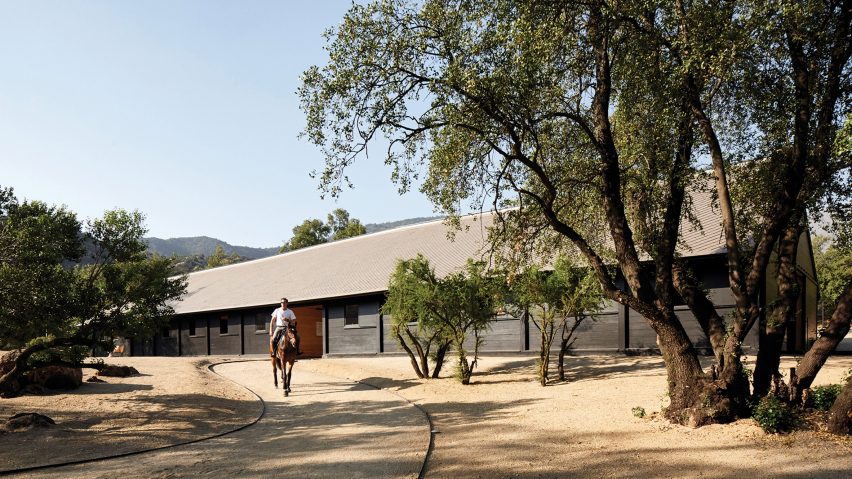
Elongated skylight illuminates stables in Chile by Matias Zegers Architects
A skylight that runs along the ridge of this stables near the Chilean capital of Santiago allows daylight to flood onto laminated-timber trusses that support its curved ceiling.
Santiago-based architect Matias Zegers designed the stables for an equestrian centre occupying a three-hectare compound in the foothills of the Andes mountains.
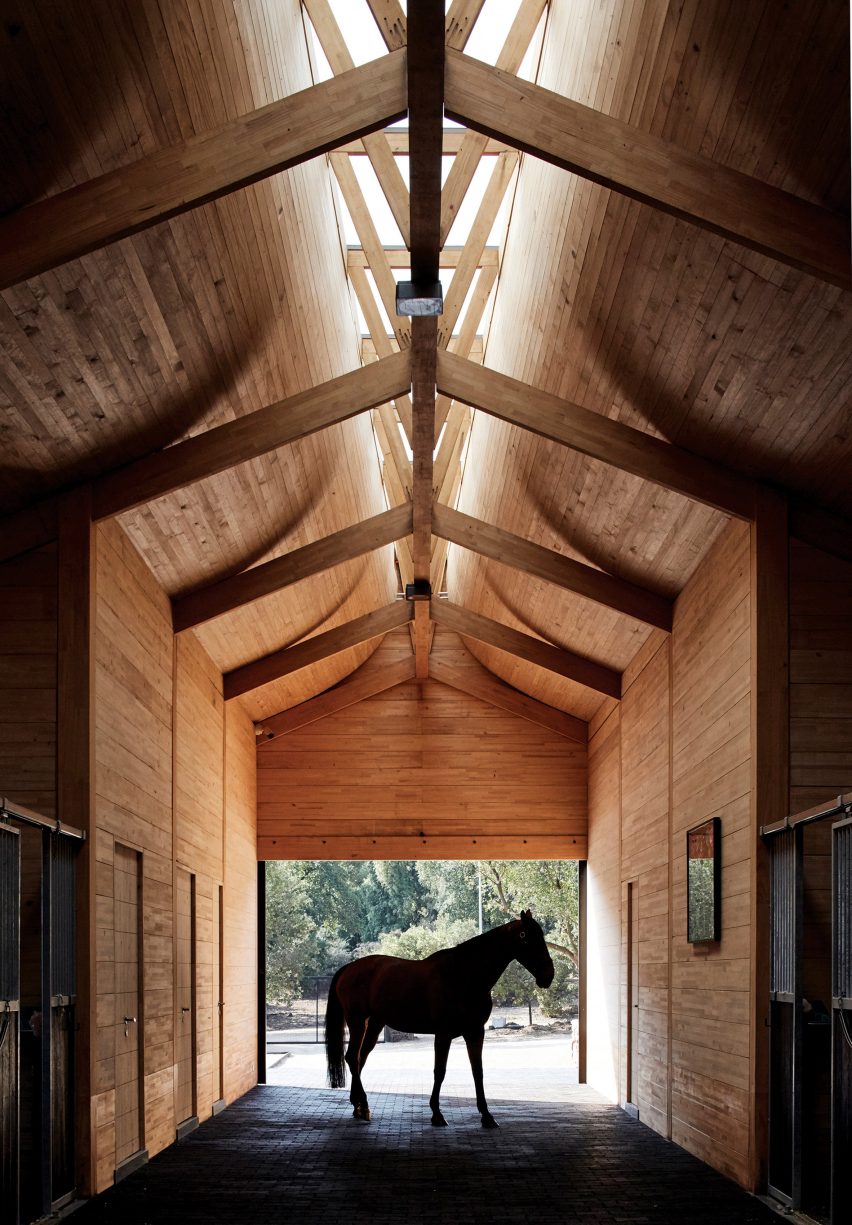
Zegers, who founded Matias Zegers Architects, has been riding horses since early childhood and wanted to create a stables that provides the best possible conditions for the horses' wellbeing.
The simple, gabled structure can accommodate 14 showjumping horses and is positioned close to a training arena on a patch of ground surrounded by native quillayes trees.
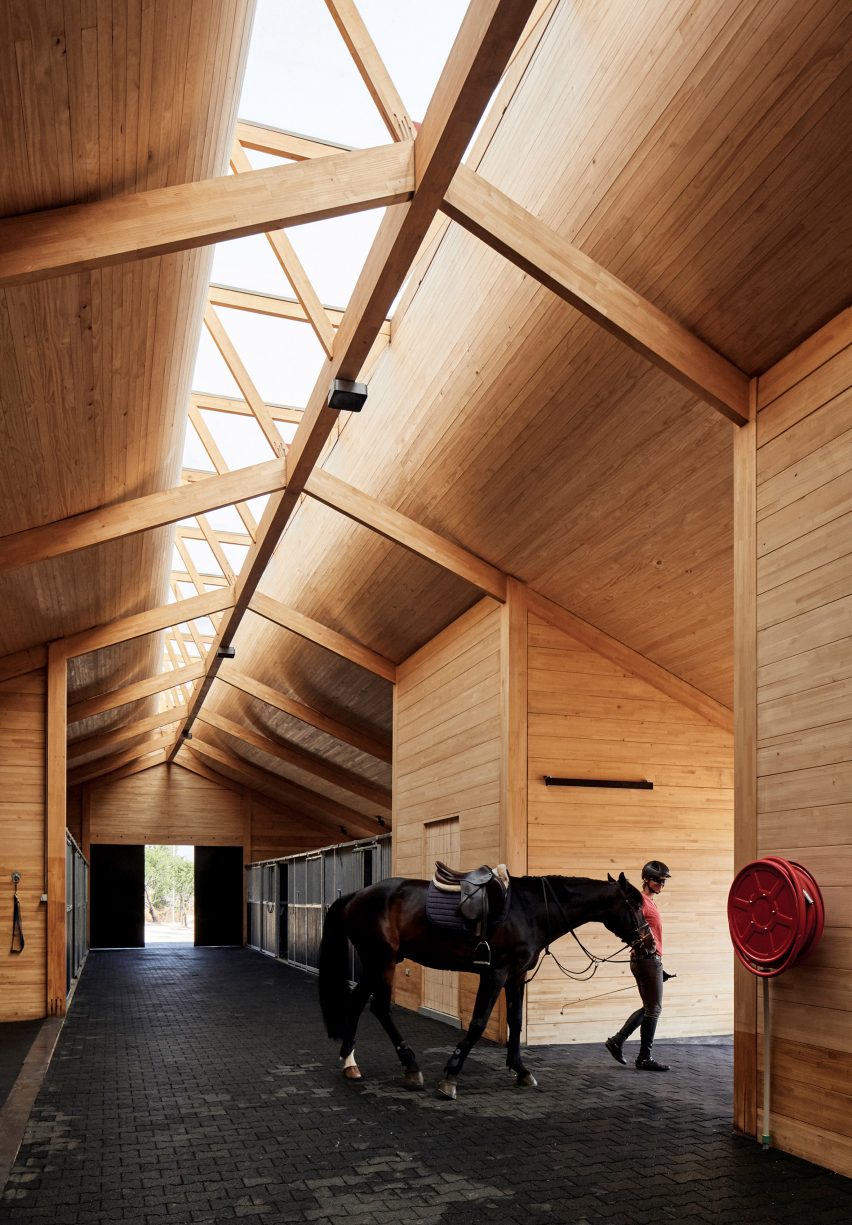
The building's key feature is the slender roof light, which runs from one end to the other and provides enough natural light for the grooms to work indoors throughout the year with minimal artificial light.
The opening is narrowest at its ends where the stalls are situated to ensure a calm and restful ambiance for the horses. It widens towards the centre to provide adequate illumination to the showers and saddle rooms positioned in this portion of the building.
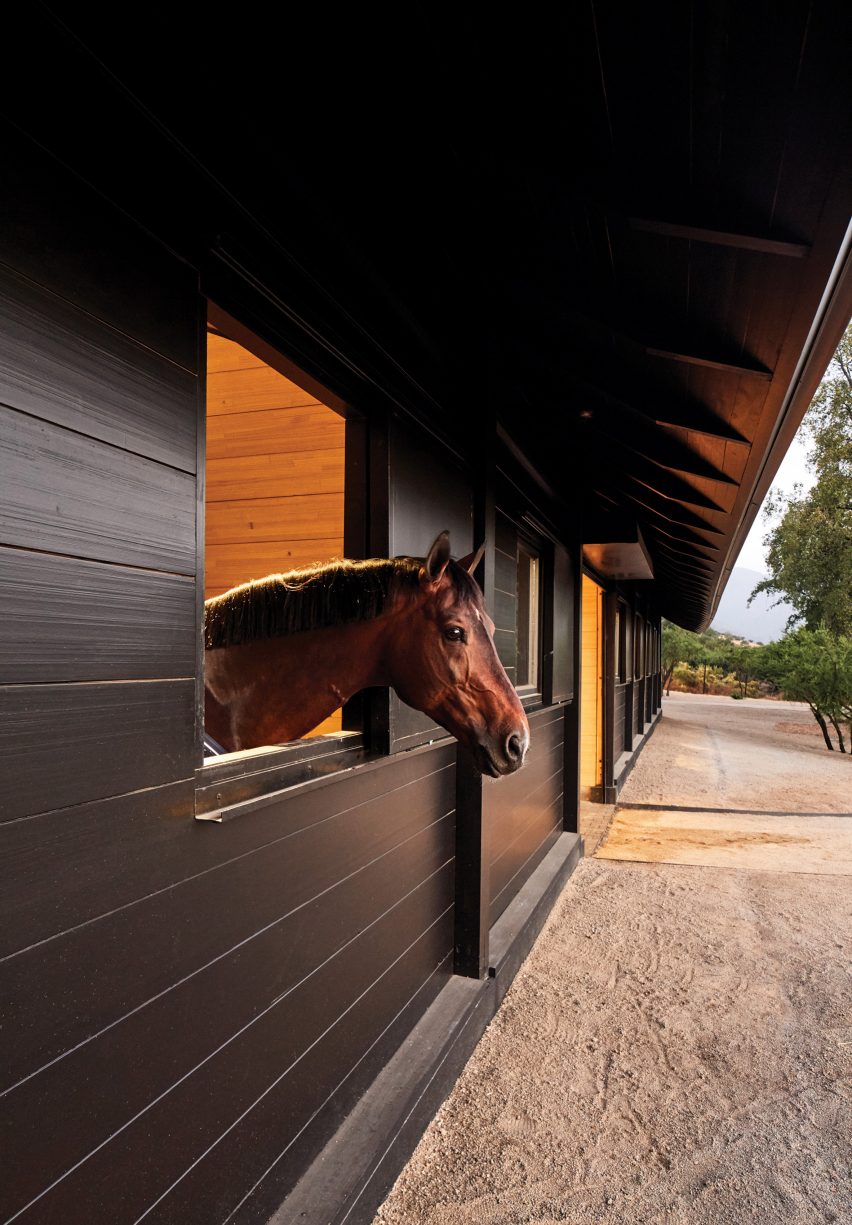
The timber-lined ceilings on either side of the skylight are curved to allow the light to diffuse gently over their surfaces. A double layer of opal glass was used for the skylight to create a more even quality of light.
The stables is designed to fit unobtrusively into its setting. Its simple gabled form recalls vernacular agricultural buildings, such as neighbouring structures including a covered training ring and an equipment barn.
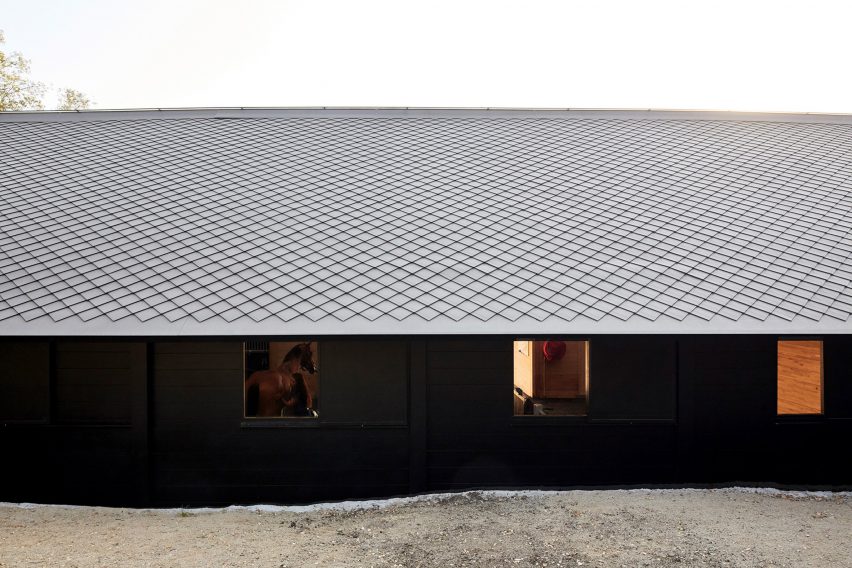
"When seen from a distance, both [the building's] shape and texture makes it disappear not only to the eye but also to the memory," Zegers explains, "fading away along with the hundred similar stables we might have seen."
Exterior surfaces clad in dark-stained wood help the stables blend in with its natural surroundings. The dark facades are complemented by metallic roof tiles that cover the gently bowed and angled surface.
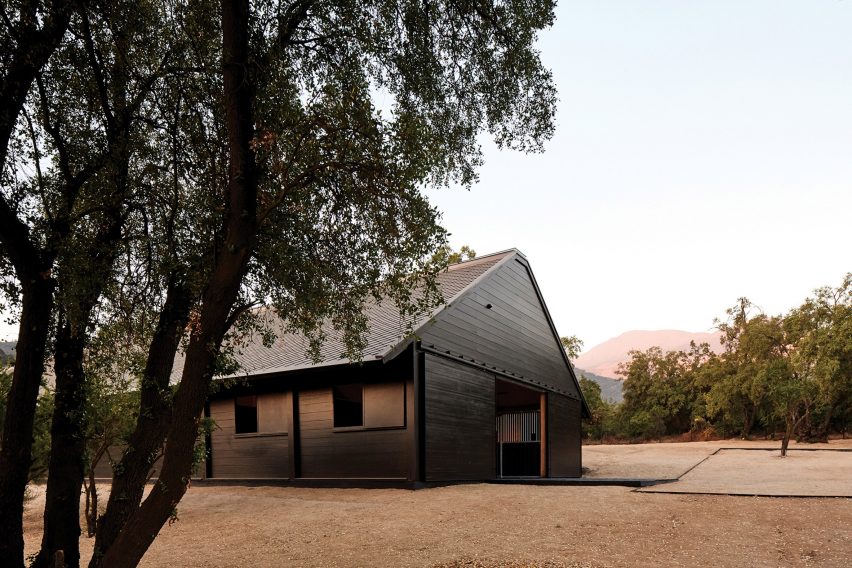
"The outer layer of metallic tiles settles as a textile, negotiating with this geometry with no trouble," Zegers added. "Daylight reflects off this skin, displaying different hues on its satin-bronze colour."

Openings at both of the gabled ends and at the centre of one elevation lead straight into the building. This transition is accentuated by the contrast between the dark facades and warm wood interior.
The building was constructed using laminated timber. The structure and walls were prefabricated in a factory in the Chilean city of Los Ángeles and assembled on site in just 45 days.
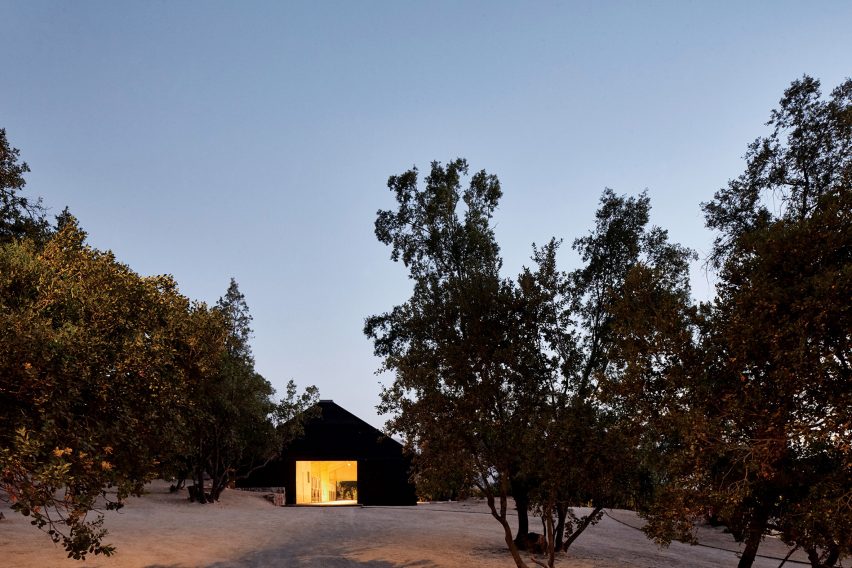
Other recently designed stable buildings include one in Argentina featuring a cast concrete staircase and a turfed roof, and one in Mexico built from volcanic rock.
Photography is by Cristóbal Palma.